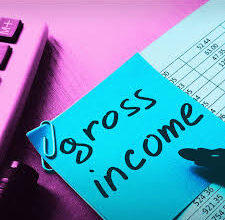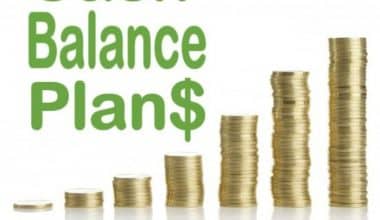Several American workplaces provide 401(k) plans, which are retirement savings vehicles that offer savings tax benefits. It bears a section number from the United States Internal Tax Code (IRC). In order to participate in a 401(k), an employee must consent to have a portion of each paycheck transferred directly into an investing account. This donation may receive a partial or full match from the employer. The employee has a variety of investment alternatives, most often mutual funds. It is important you know the difference between IRA vs 401K. This article explains how a 401K work when you retire and about 401K withdrawal.
What Is 401K?
Employers provide 401(k) plans as a way for employees to save for and invest for their retirement. Employees receive a tax credit on their contributions to a 401(k) plan. Automatically taken out of employees’ paychecks and invested in funds of their choosing are contributions (from a list of available offerings). The accounts have a $22,500 yearly contribution cap in 2023 ($30,000 for individuals over 50).
The provision of the tax code that created this kind of plan, specifically subsection 401(k), is where the catchy name originates. By setting up automatic withdrawals from their paychecks, employees make contributions to individual accounts. Depending on the type of plan you have, you may receive a tax reduction either when you make contributions or when you withdraw funds in retirement.
The nicest part of employee orientation can occasionally entail free money, so if you fell asleep at this point during the session, you may have missed it.
Types of 401(k)
It is appropriate at this point to point out that there are other 401(k) plan types, including the two most common ones, the standard 401(k) and the Roth 401(k) (k). Your savings are eligible for an upfront tax benefit if you choose a classic (or ordinary) 401(k). It is not possible to deduct contributions to a Roth 401(k) from taxes because they are made with after-tax money. But don’t worry, the Roth will eventually pay off.
#1. Traditional 401(k)
Employee contributions to a conventional 401(k) are taken out of gross income. This indicates that the funds are taken directly out of your paycheck before taxes have been taken out. Your taxable income is consequently decreased by the total amount of contributions made for the year, and that reduction can be claimed as a tax deduction for that particular tax year. Donated funds and investment gains are tax-free until they are removed, usually in retirement.
#2. Roth 401(k)
The contributions you make to a Roth 401(k) are deducted from your post-tax income. This indicates that contributions are paid from your wages after income taxes have been taken off. Hence, there is no tax break in the year of the donation. But, there are no additional taxes due on either your contribution or the investment gains when you withdraw the money after retirement.
Yet not every company provides the choice of a Roth account. You have a choice between a standard and Roth 401(k) if the Roth is offered (k). Alternatively, you may fund both accounts up to the annual contribution cap.
401K Withdrawal
To make sure you have enough money when you get old, stop working, and are no longer paid a regular paycheck, tax-advantaged retirement funds like 401(k)s are available. You might occasionally feel the urge to access your money before retiring, but if you give in to such urges, you’ll probably end up paying a steep price, including early withdrawal fees and taxes like federal income tax, a 10% penalty on the amount you withdraw, and any state income tax.
The average American retires in their mid-60s. With retirement savings programs, such as the company-sponsored 401(k), there is a little more flexibility given (k). You can start collecting distributions from your 401(k) without paying an early withdrawal penalty as soon as you become 5912 years old, according to the Federal Revenue Service (IRS).
You can avoid the 10% early withdrawal penalty for withdrawing money out of your 401(k) if you retire or lose your employment before reaching age 5912, but this only applies to the 401(k) from the company you just left. This exclusion does not apply to IRA or former workplace plan funds.
How Does a 401K Work When You Retire
After reaching the age of retirement, you can begin taking from your 401(k) account (k). Yet, a variety of regulations apply to 401(k) distributions for retirees. For instance, you must typically wait until you are older than 59.5 in order to retire and begin pulling money out. Despite Roth 401(k) payouts being tax-free, retirees at any age must pay federal income taxes on withdrawals from traditional 401(k) plans. Retirees must also begin taking annual mandated minimum distributions from their 401(k) plans after reaching the age of 70.5 or 72, depending on when they were born.
Basics of 401(k) Distributions
In the event that your employer has a 401(k) retirement plan, you are allowed to make contributions to it while still employed and receive worthwhile tax benefits. A retirement savings plan can be greatly boosted when your company matches a portion of your payments. Also, 401(k) assets’ investment gains amass without being taxed.
But, while withdrawing from a 401(k), you must abide by a multitude of rules, just like with most tax-related issues. By enforcing penalties for breaches, the IRS promotes adherence to these guidelines. Because certain fines are severe, retirees should know the 401(k) withdrawal rules before retirement.
Age Considerations with 401(k) Distributions
But, they function best if you don’t intend to stop working much before the traditional retirement age. A 401(k) plan can be a valuable tool for retirement savers. This is due to the 10% penalty that is often applied to 401(k) withdrawals made before the age of 59.5, in addition to the ordinary income taxes that apply to all other 401(k) withdrawals. Refrain from withdrawing before the age of 59.5 to avoid the 10% penalty. If you do withdraw money before age 59.5, you can avoid taxes and penalties by immediately rolling over the entire amount into another retirement plan.
But, if you are currently unemployed, you will not be subject to the 10% penalty. If you lose your work, you might be allowed to take a penalty-free withdrawal from your 401(k) as early as age 55. Handicapped people can also retire before 59.5 without penalty.
Required Minimum Distributions
Age comes into effect later and affects when you can withdraw funds without being penalized. If you were born after July 1, 1949, you must begin taking Required Minimum Distributions (RMDs) from your 401(k) each year after you age 72. RMDs must start for those who were born before that date at age 70.5. Even if you aren’t yet retired, you must start taking RMDs when you reach the required age.
The annual RMD amounts are typically computed to transfer the entirety of your 401(k) at the conclusion of your anticipated life expectancy. With severe consequences for noncompliance, these withdrawals are required. If you don’t withdraw the RMD before the deadline, the IRS might fine you 50% of the payout.
401K Benefits
An employee can invest a portion of their pretax income in a 401(k) plan provided by their company. The benefits that employees want the most right now are retirement plans. In fact, according to 62% of job seekers surveyed by Accenture, 401(k) plans from employers make them more inclined to accept a job offer. Even though this perk is well-liked, some smaller businesses dread the setup and administration costs of providing a 401k plan.
The following 401k benefits that your company will experience from providing a 401k retirement plan should be taken into account before completely discounting this perk.
#1. Tax Advantages
If your company has 100 workers or fewer, you may be able to deduct half of the money used to launch your 401(k) from your taxes. A tax credit of up to $5,000 per year for the first three years is also available to groups under the SECURE (Setting Every Community Up for Retirement Enhancement) Act.
Although it is not necessary for you to match employee contributions, you are allowed to deduct a specific amount of your contributions on the company’s federal income tax return. Many businesses match employee contributions with 50 cents on the dollar, subject to certain restrictions.
#2. Recruit and Keep Talent
One of the perks that job applicants most desire is retirement plans, as was already noted. You can maintain your competitiveness in luring the top employees to your organization by including 401k plans in your benefits package. In today’s competitive talent market, this is particularly crucial. Offering retirement choices will also help with employee retention because it demonstrates your concern for their financial future.
#3.Provides Security
The concept of financial security is currently quite popular. Offering resources to train staff in making wise decisions to ensure a safe financial future brings security to staff. Also, don’t undervalue this feeling of safety. Employees have a greater mental capacity to devote themselves to their tasks as a result, which lowers stress and enhances morale. This results in greater productivity and favorable perception of your company.
#4. Provides Rewards
There are several effective strategies to increase productivity and motivate staff to achieve objectives. You could provide staff non-matching or profit-sharing donations as a mark of appreciation for their work. Whether or whether an employee makes contributions to a retirement plan, you can still make these payments on their behalf. What’s best? The aforementioned tax benefits continue to apply to you.
These four advantages of having a 401k plan are only available to your company if your employees participate in it. Hence, while providing retirement benefits to your eligible employees, you must do it in a clear and concise manner. Don’t forget to mention them throughout enrollment and orientation times for your benefits. Also, you can remind staff members about this benefit in the company handbook or intranet.
IRA vs 401K
401(k) plans and individual retirement accounts are the two primary methods of retirement savings. Employers may allow membership in a defined-contribution plan, such as a 401(k), when they want to provide their staff with a tax-advantaged opportunity to save for retirement (k).
To their 401(k), employees often contribute a portion of their salaries, and occasionally, their employers may match those contributions up to a certain amount. If a business employs 100 or fewer people, it may also provide a simplified employee pension (SEP) IRA or a Savings Incentive Match Plan for Employees (SIMPLE) IRA.
Although an individual can open both a 401(k) and an IRA, they can choose to save on their own. IRAs, however, do not offer employer-matching contributions. The income and contribution caps for different IRA kinds vary, and each one also has its own set of tax benefits. While interest and earnings accrue tax-free in a standard IRA or 401(k), distributions are normally taxed at the recipient’s marginal income tax rate when they are withdrawn.
Yet, certain IRAs permit tax-free withdrawals throughout retirement. Most IRAs and 401(k)s prohibit withdrawals before the account holder becomes 5912; otherwise, the Internal Revenue Service will impose a tax penalty (IRS). Once more, there may be exceptions to the early withdrawal penalty depending on the specific retirement account and a person’s financial position.
The primary distinction between 401(k) plans and IRAs is that the former is provided by employers while the latter must be opened by the individual themselves through a broker or bank. Although 401(k)s permit bigger annual contributions, IRAs often provide more investment alternatives.
In 2023, you can put $22,500 into your 401(k) (or $30,000 if you’re 50 or older). In 2023, the IRA contribution cap will be $6,500 ($7,500 if you’re 50 or older).
What Happens to 401K When You Quit?
Your 401(k) will remain in place if you quit your employment until you determine what to do with it. You can leave it in place, transfer it to another retirement account, or cash it out, among other options.
How Does a 401K Make Money?
Compound interest allows money in 401(k) plans to grow tax-free. For instance, if you put $100 into your plan from each paycheck, neither the money itself nor the interest it accrues over the tax year is subject to income tax. As a result, your interest effectively earns interest. Instead, the interest is reinvested.
Is It Good to Have a 401K?
Saving money on taxes is one of the most potent benefits of contributing to a 401(k). Before taxes are removed from your paycheck, your 401(k) contributions are deducted. As a result, you have a lower gross income and pay less income tax.
Can You Lose Your 401K if You Get Fired?
All employer contributions that are still invested in your 401(k) account are forfeited if you are fired. Your contributions are always fully vested, so you can never lose this amount of your 401(k).
Can I Withdraw Money from 401K?
Yes, you are permitted to make 401(k) withdrawals prior to age 5912. Early withdrawals, however, may result in significant fines and tax repercussions. Here are some guidelines to follow and options to think about if you need to access your retirement money early.
Does 401K Pay You Monthly?
The amount you choose to receive monthly or quarterly can often be changed once a year, however, some programs permit you to do so much more regularly.
How Much Is 401K Salary?
You should invest 10% to 15% of your annual income in your 401(k), according to the majority of retirement advisers. The maximum contribution you can make in 2023 is $22,500, or $30,000 if you’re 50 or older (an additional $7,500). To calculate a contribution rate, take into consideration consulting a financial expert.
Final Thoughts
A 401(k) plan is a type of company retirement plan that allows employees to save and invest up to a certain amount each year in preparation for their retirement. The pre-tax contributions used in the traditional 401(k) lower your taxable income and provide you with a tax advantage when you make them. On your withdrawals, though, you are subject to ordinary income tax. Roth 401(k) contributions must be made after taxes, but retirement withdrawals are tax-free. Employer contributions are permitted for both accounts, which can improve your savings.
Related Articles
- TAXES ON 401K WITHDRAWAL: Everything You Should Know!!!
- What to Do With 401(K) After Leaving a Job: Best Practices in 2023
- CASHING OUT 401K: How It Works & What to Consider
- MAX CONTRIBUTION TO 401K: Limits & 2023 Comprehensive Guide
- HOW TO CHECK 401K BALANCE: Simple Guide
- What Is a Simple IRA vs 401K: What Are Their Differences






